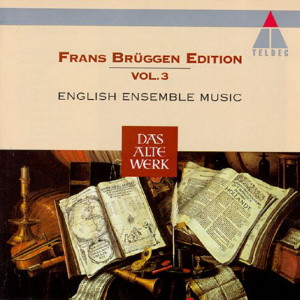 |
|
1 CD -
4509-97465-2 - (c) 1995
|
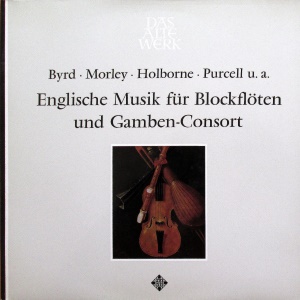
|
| 1 LP -
SAWT 9511-B - (p) 1967 |
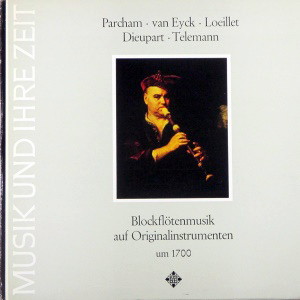 |
| 1 LP -
SAWT 9482-A - (p) 1966 |
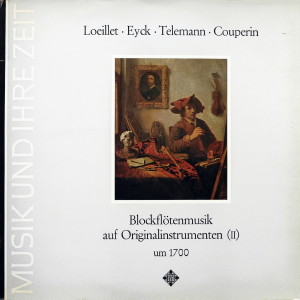 |
| 1 LP -
SAWT 9545-A - (p) 1969 |
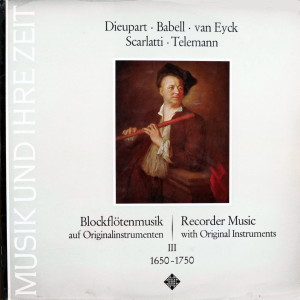 |
| 1 LP -
SAWT 9582-A - (p) 1971 |
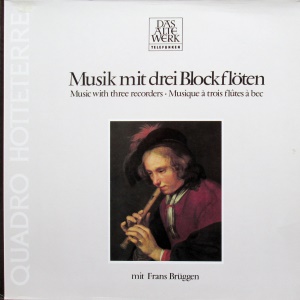 |
| 1 LP -
6.42365 AW - (p) 1979 |
|
| FRANS
BRÜGGEN EDITION - Volume 3 |
|
|
|
|
|
| ENGLISH ENSEMBLE MUSIC |
|
|
|
|
|
| Anthony Holborne
(?1584-?1602) |
|
|
Dances and Airs a
5 - from "Pavans,
Galliards, Almains and other short
Aeirs...", London 1599
|
|
|
| 1.
Pavan |
1' 42" |
|
| 2.
Galliard |
1' 13" |
|
3.
The Honie Suckle
|
2' 01" |
|
4.
The Sighes
|
2' 06" |
|
5.
The Night Watch
|
1' 16" |
|
6.
Heigh-Ho Holiday
|
1' 02" |
|
|
|
|
| John Taverner
(c.1490-1545) |
|
|
| 7.
In Nomine a 4 - four
recorders |
1' 45" |
|
|
|
|
| Christopher Tye
(c.1505-1572) |
|
|
| 8. In Nomine
("Cry") a 5 - recorder,
viol/oboe, viol/recorder,
viol/recorder, viol |
1' 42" |
|
|
|
|
| William Byrd
(1543-1623) |
|
|
| 9. In Nomine a
5 - recorder, viol, viol,
recorder, viol |
3' 06" |
|
|
|
|
| Thomas Simpson
(c.1582 - after 1630) |
|
|
10. "Bonny
Sweet Robin", Ricercar a 4 -
viol, recorder, recorder,
viol/virginal - from "Taffel-Consort",
Hamburg 1621
|
3' 02" |
|
|
|
|
| William Byrd
(1543-1623) |
|
|
| 11. "The
leaves be green", Browning a 5
- five recorders |
4' 24" |
|
|
|
|
| Thomas Morley
(1557/58-1602) |
|
|
12. "La
Girandola" a 2 - two viols -
from "The first Booke of
Canzonets to Two Voyces",
London 1595
|
1' 09" |
|
| 13. "Il
Lamento" a 2 - two recorders - from "The
first Booke of Canzonets to Two
Voyces", London 1595 |
2' 09" |
|
| 14. "La
Caccia" a 2 - recorder and
viol - from "The
first Booke of Canzonets to Two
Voyces", London 1595 |
1' 22" |
|
|
|
|
| George Jeffreys
(c.1610-1685) |
|
|
| 15. Fantasia a
3 - recroder, two viols |
3' 56" |
|
|
|
|
| Andrew Parcham
(before 1700) |
|
|
| 16. Solo in G
- treble recorder and basso
continuo |
7' 27" |
|
|
|
|
| Robert Carr (17th
century) |
|
|
| 17. Divisions
upon an Italian ground -
treble recorder and basso continuo
- from "The delightful
companion", 1686 |
2' 40" |
|
|
|
|
| William Babell
(c.1690-1723) |
|
|
| Concerto
a 7 in D major - recorder
[sixth flute], strings and basso
continuo |
9' 19" |
|
| 18. Allegro |
2'
43" |
|
| 19. Adagio |
1'
52" |
|
| 20. Allegro |
4'
44" |
|
|
|
|
| Johann Christioher
Pepusch (1667-1752) |
|
|
| Sonata
no. 4 in F major - treble
recorder and basso continuo |
7' 10" |
|
| 21. Adagio |
1'
45" |
|
| 22. Allegro |
1'
18" |
|
| 23. Adagio |
1'
44" |
|
| 24. Giga |
2'
13" |
|
|
|
|
| Henry Purcell
(1659-1695) |
|
|
| 25. Chaconne
"Three parts upon a ground" in F
major - three treble recroders,
violoncello and harpsichord |
4' 57" |
|
|
|
|
| Frans Brüggen, recorder |
Brüggen-Consort,
(1-15) |
|
Kees Boeke, recorder
(25)
|
- Elly Baghuis, recorder
(treble, tenor) |
|
| Walter van Hauwe,
recorder (25) |
- Kees Boeke, recorder
(treble, tenor) |
|
| Marie Leonhardt,
violin (18-20) |
- Frans Brüggen, recorder
(descant, tenor, basset, great bass) |
|
| Alda Stuurop, violin
(18-20) |
- Bruce Haynes, recorder
(treble, bassett) & oboe
|
|
| Antoinette van den
Hombergh, violin (18-20) |
- Jeannette van
Wingerden, recorder (descant, tenor,
basset, bass) |
|
| Lucy van Dael, violin
(18-20) |
- Veronika Hampe, viol
(dessus de viole, tenor, bass) |
|
| Fred Nijenhuis,
double bass (18-20) |
- Sigiswald Kuijken, viol
(dessus de viole, treble, tenor, bass) |
|
| Anner Bylsma, violoncello
(17-24) |
- Kees Vellekoop, viol
(bass) |
|
| Wouter Möller, violoncello
(25) |
- Anneke Uittenbosch, virginal |
|
| Nikolaus Harnoncourt,
bass viol (16) |
|
|
| Gustav Leonhardt,
harpsichord (16-24) |
|
|
| Bob van Asperen,
harpsichord (25) |
|
|
|
|
|
|
Luogo
e data di registrazione |
|
-
Bennebroek (Olanda) - marzo 1967
[1-15]
- Bennebroek (Olanda) - maggio
1979 [17, 21-24]
- Doopsgezinde Kerk, Haarlem
(Olanda) - luglio 1979 [25]
- Doopsgezinde Kerk, Amsterdam
(Olanda) - gennaio & novembre
1971 [18-20]
|
|
|
Registrazione:
live / studio |
|
studio |
|
|
Producer /
Engineer |
|
Wolf
Ericson [1-15, 17, 21-24] |
|
|
Prima Edizione
LP |
|
-
Telefunken "Das Alte Werk" - SAWT
9511-B - (1 LP) - durata 40' 07" -
(p) 1967 - Analogico [1-15]
- Telefunken "Das Alte Werk" -
SAWT 9482-A - (1 LP) - durata 48'
01" - (p) 1966 - Analogico [16]
- Telefunken "Das Alte Werk" -
SAWT 9545-A - (1 LP) - durata 41'
45" - (p) 1969 - Analogico [17,
21-24]
- Telefunken "Das Alte Werk" -
SAWT 9582-A - (1 LP) - durata 52'
43" - (p) 1971 - Analogico [18-20]
- Telefunken "Das Alte Werk" -
6.42365 AW - (1 LP) - durata 39'
49" - (p) 1979 - Analogico [25]
|
|
|
Edizione CD |
|
Teldec
- 4509-97465-2 - (1 CD) - durata
64' 20" - (c) 1995 - ADD |
|
|
Note |
|
- |
|
|
|
|
The works
included in the present disc
cover a period of 200 years
in English musical history
from the time of Henry VIII to
the early 18th century.
Although these years were
notable for a lively
exchange of stylistic ideas
between Britain and
Continental Europe, English
music none the less retained
its distinctive charactec
not least in terms of the
various types of
instrumental music.
From the outset instruments
were used in dance music
independently of the human
voice. Anthony Holborne
suggests several possible
combinations of instruments
for his dances, with winds
as alternatives to viols or
violins.
English audiences were
particularly fond of the
sound of viol and recorder
consorts. In the case of
“broken consorts” (i.e.,
consorts of different kinds
of instruments), the
preferred combination was
viols, recorders and plucked
instruments.
John
Taverner’s Missa “Gloria
tibi
Trinitatis” includes a
setting of the Benedictus
that was
to provide the model for a
new and purely instrumental
type of music, in which one
voice takes the cantus
firmus in long note-values,
while the other voices
provide an accompaniment in
the form of elaborate
polyphonic textures. The
Latin words that are sung to
the chorale tune in
Taverner’s version gave
their name to this
exclusively English genre,
which was henceforth known
as the In Nomine.
The works by Tye and Byrd
included here indicate the
range of compositional
possibilities inherent in
the genre.
“Browning” was the title of
an English l6th-century
popular tune that was used
as the basis for elaborate
instrumental variations by a
number of English composers,
most notably by William Byrd
in his five-part “Browning”.
The fantasia drew its
musical material not from an
existing tune but from the
composers own imagination.
By the l7th century
fantasies were increasingly
divided into clearly
compartmentalised sections,
while the middle voices grew
less important and were
often omitted entirely not
least as the continuo
developed in significance.
Andrew Parcham’s Solo in G
major shows the
juxtaposition of old and new
with individual
self-contained movements
appearing alongside brief,
contrastive sections that
are linked together without
a break.
The advent of a private,
middle-class musical culture
in late Elizabethan England
brought with it a boom in
printing and publishing. In
1598 Elizabeth I granted
Thomas Morley a monopoly
over music printing,
according him a 21-year
royal patent. Apart from his
own works, Morley also
published Italian madrigals
and in doing so popular ised
the genre in England. His
two-part canzonets combine
Italianate influence with
the English fantasia
tradition. But the influence
was by no means
unidirectional, since many
English musicians travelled
to Europe, where
their music met with immense
acclaim. Thomas Simpson's
Ricercar was only one of
many works
to appear in printed
anthologies in North Germany
in particular.
A “ground” is a bass melody
recurring many times in
succession and accompanied
by continuous variation in
the upper parts. Notable
examples were
written by Robert Carr and
Henry Purcell, but, unlike
Purcell, Carr dispensed
entirely With virtuoso
figures. The works
by Pepusch and Babell,
finally, are typical
examples of the high or late
Baroque and are formally
indebted to the Italianate
sonata and concerto, which
by this date had become the
structural norm.
Christian
Bothmann
·····
A brief
history of the
recorder
3.
The recorder in the 17th
century
Early
recorders had been made
of either a single piece
of wood or of a single
tube with a movable
foot-joint, and it was
not until the 17th
century that the modern
recorder with its three
jointed sections was
first evolved, although
we do not know exactly
how, when or where.
All that we can say for
certain is that the
change appears to have
taken place in parallel
with an evolving tonal
aesthetic.
Throughout the centuries
woodwind makers
generally preferred
softer woods such as
maple, pear and boxwood:
all these types of wood
are easy to turn and
carve and generally
produce a warm tone. The
Kynseker Consort in the
Germanisches
Nationalmuseum in
Nuremberg, for example,
is made of these softer
types of wood: it
comprises two descant
and two treble recorders
of plum, and two tenor
and one bass recorder of
boxwood.
All these instruments
are in two sections and
based in their
construction on
16th-century principles.
All the holes are
single, with only the
lowest being double,
thereby allowing the
instrument to be played
either left- or
right-handedly.
Hieronimus
Kynseker was active in
Nuremberg in the 1670s
and 1680s as a wood-
and ivory-turner. He
was the first maker of
woodwind instruments
to sign his full name
and hometown on his
instruments. Eleven of
his recorders and a
single flageolet have
survived the
intervening centuries.
By this date
Nuremberg had a
long-standing
reputation as
Germany's leading
centre for woodturning
and, hence, for the
manufacture of
woodwind and brass
instruments.
In
1675 we find evidence
of a Jacques
Hotteterre at the
English court.
Although recorded as a
musician, he was
probably also an
instrument maker and
may have been
responsible for the
introduction of French
woodwind instruments
into England.
The Hotteterres hailed
from La
Couture-Boussey in
Normandy and had
become famous as
musicians and
wood-turners in the
early 17th century The
oldest member of the
family to make a name
for himself was the tourneur
en boys, Loys de
Haulteterre, who died
c. 1620-25. Of
those of his
descendants who were
active as musicians
and instrument makers
suffice it to mention
only Nicolas l'aîné
(c. 1637-1694),
Martin (c.
1640-1712),
Louis (c.
1645/50-1716), Nicolas
le jeune
(1653-1727) and Jacques-Martin
(1674-1763). Around
twenty of their
instruments -
treble, tenor and bass
recorders, in addition
to flutes and oboes -
have survived. Most of
them are made of
boxwood or maple, but
some are of harder
woods such as ebony
and granadilla. Ivory
rings and ornamental
carvings were often
used to embellish such
instruments.
All are in three
sections, with an
inner bore that is
very wide, smooth and
almost conical. The
result is a sound low
in overtones but very
warm, relatively soft
and round, all
qualities associated
with the Baroque
recorder.
In 1677 Bartolomeo
Bismantova, a member
of the Ferrara
Cathedral orchestra
and also of the city’s
Accademia dello
Spirito Santo wrote
his treatise Compendio
Musicale, which
contains a section on
the recorder. It
is a particularly
valuable work in that
virtually no other
wind-instrument method
has survived from this
period. The instrument
that he describes
reveals an interesting
combination of
Renaissance and
Baroque features.
Particularly striking
is the fact that Bismantova
refers to the recorder
as the flauto
italiano
and that he
prescribed far softer
articulatory syllables
for the recorder than
for the cornett, for
example.
Peter
Holtslag
Translation:
Stewart Spencer
|
|